Tofu has been a staple food in Japan for many years but has gained popularity around the world for its versatility and health benefits, especially for those who eat plant-based diets.
There is a lot to learn from Japan about tofu, from the different types of tofu that are available to try, as well as how to enjoy tofu the Japanese way.
If you have been wary of trying tofu, it’s worth giving it another chance the next time you visit Japan or even a Japanese restaurant.
What Exactly Is Tofu?
Tofu is produced from soybeans that have been made into soy milk. This soy milk is then coagulated, producing curds, which are subsequently pressed into blocks of tofu. These blocks are usually pressed into different variations of firmness, from silken to the super firm.
Tofu is known for having a soft, pillowy texture, and is a sponge for all the spices, seasonings, and sauces it is cooked in. It doesn’t have much of a flavor of its own.
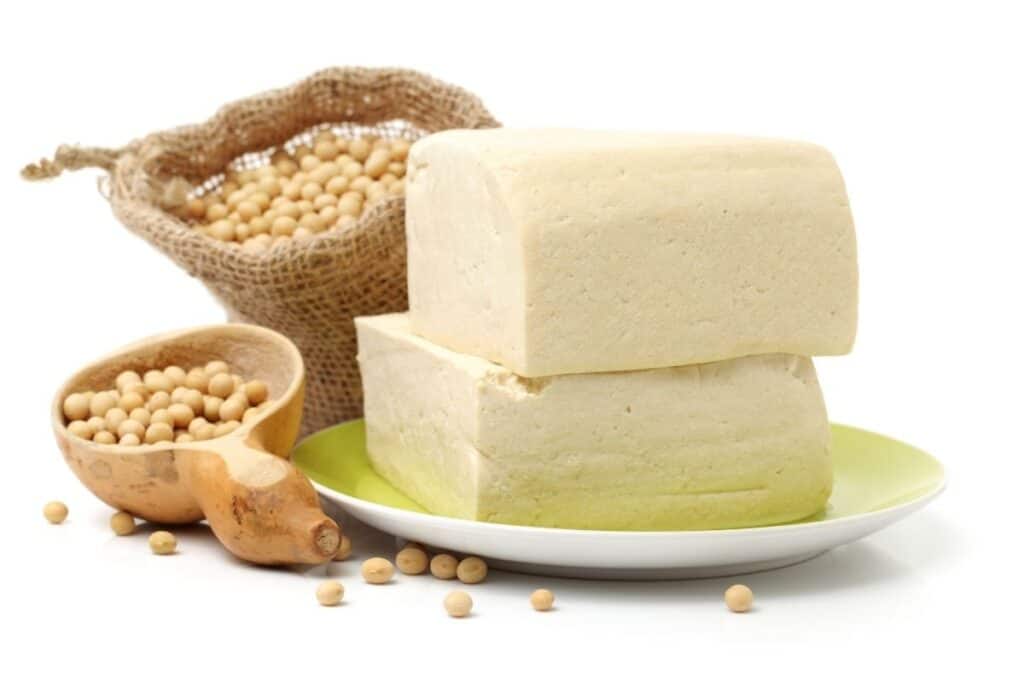
It’s also known as one of the best sources of plant-based protein and contains many other nutrients such as iron and calcium.
Tofu originally came to Japan from China, which has been eating tofu for centuries longer than Japan. It is a staple food in many countries other than Japan and China, including Thailand, Indonesia, and Vietnam.
What Are The Different Types Of Tofu In Japan?
Japan holds soy as one of the paramount of their cuisine. This includes tofu, which is found in different forms in Japanese cuisine depending on the dish it is served with.
There are five different types of tofu that are usually found in a Japanese dish, but there are more types on the market than these five.
Soft Tofu
Soft tofu is tofu that has been pressed lightly, and it is very malleable and easy to work with. This form of tofu is often used in cold dishes in Japanese cuisine.
It tends to come packaged in water and retains a lot of that moisture. Soft tofu tends to fall apart easily, so it’s usually eaten with a spoon as opposed to chopsticks.
Firm Tofu
Firm tofu is a little bit tougher than soft tofu, making it easier to pick up with chopsticks.
There is still some moisture that seeps into firm tofu, but it is more pressed and is drained of water before being used or packaged. It is much easier to cook with this type of tofu, especially when any excess moisture is squeezed out of it.
Deep Fried Tofu
Deep-fried tofu is submerged into an oil for a light fry, and it is not usually coated with anything.
Deep fried tofu can be found in many shapes and sizes throughout Japanese cuisine. There is aburaage, which is thin and has a pocket that can be stuffed with fillings.
There is also atsuage, which can be eaten on its own or used in soups, and is thicker.
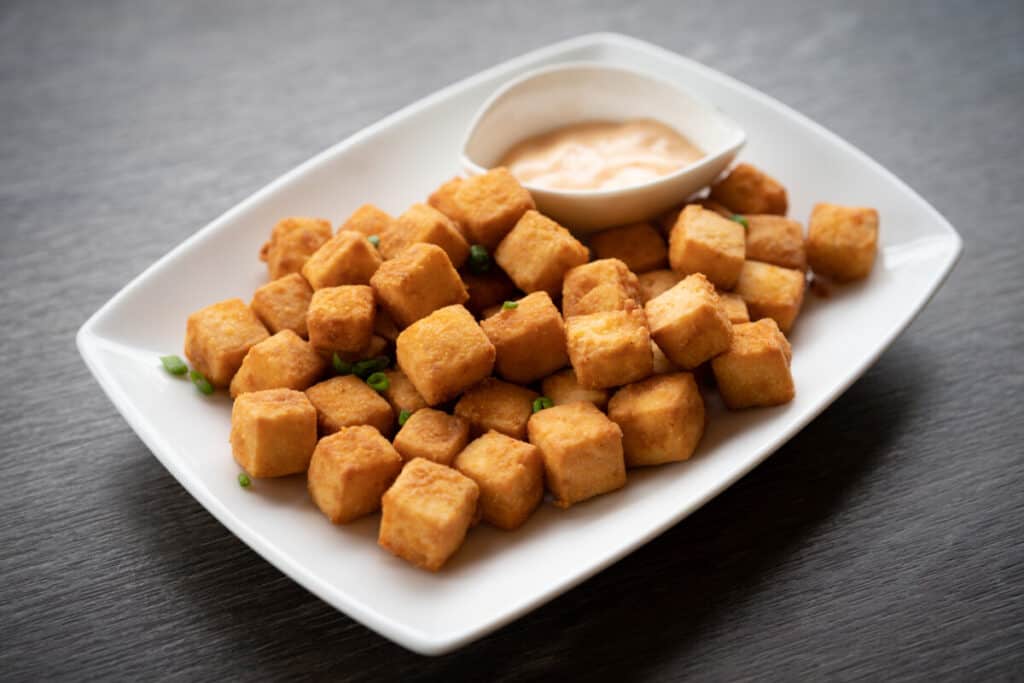
Fermented Tofu
Fermented tofu is the star of an Okinawan dish known as tofuyo, where the tofu sits in a bath of malted rice and awamori liquor.
This results in a very strong flavor that many will compare to sharp or pungent cheese. It is usually enjoyed in small serving sizes as a snack alongside an alcoholic beverage.
Freeze Dried Tofu
Freeze-dried tofu in Japan was believed to have been discovered after someone accidentally left their tofu outside in the winter.
Since then, it’s been used to create dishes from soups to entrees, or can be enjoyed on its own dipped in sauce. This is how many Buddhists and Buddhist monks enjoy their tofu.
How Did Tofu Become Popular In Japanese Food?
Tofu has been a staple in Japanese diets for centuries. It was brought over from China and was first known to be enjoyed by Zen Buddhist monks who enjoyed the protein source not derived from animals.
What Are Some Favored Japanese Dishes Containing Tofu?
Tofu dishes can be found in just about any Japanese restaurant you might visit, whether it be your local establishment or one in Japan. It has become a notable ingredient in everyday dishes loved by Japanese people for years.
Miso Soup
Miso soup is a very customary starter dish in Japanese cuisine, but it is also enjoyed as an accompaniment to many meals.
Miso paste is used in a broth, with seaweed and small pieces of regular and deep-fried tofu. Some miso soups will contain more vegetables and other ingredients.
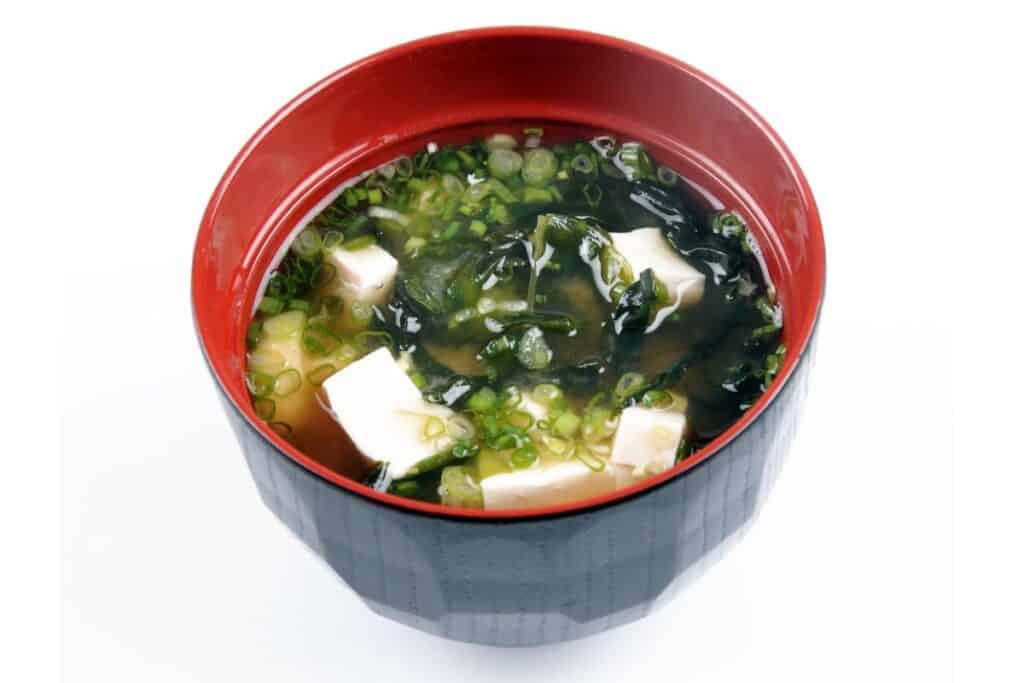
Kitsune Udon
This famed noodle dish is served with thick udon noodles in a broth, and is usually served with a sweeter deep fried tofu.
There are also some vegetables that may be added to kitsune udon, or it may just be garnished with some seaweed and Japanese rice cakes.
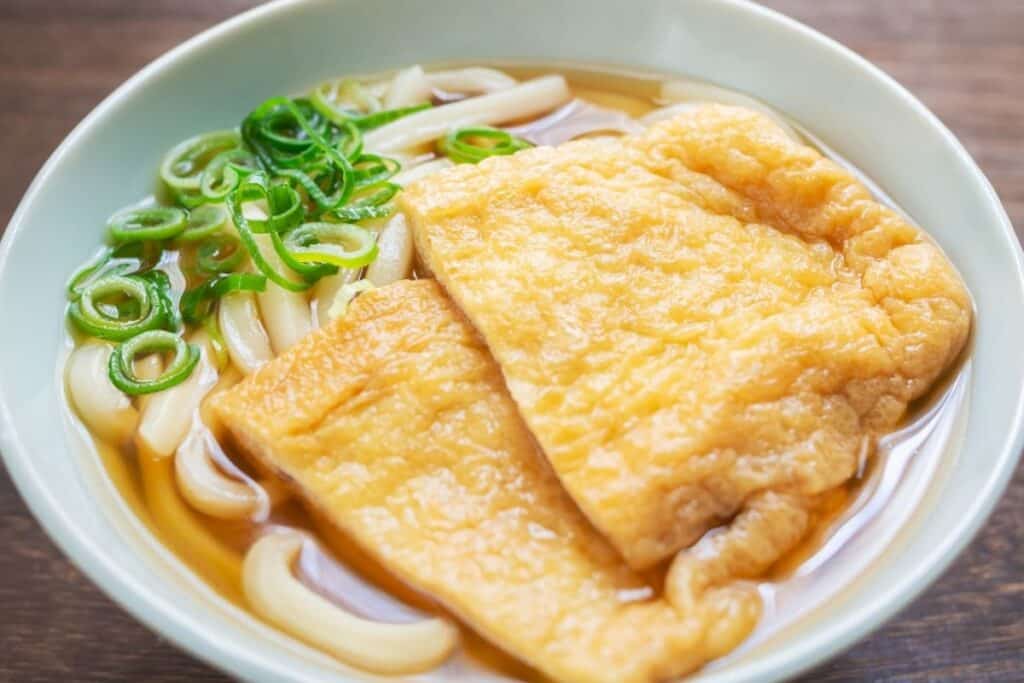
Nabe
A nabe is also known as a hot pot, which is a must-try experience if you are ever in Japan.
Many restaurants that offer nabe allow you to cook the different ingredients at the table. Tofu is often served as one of the main ingredients of nabe.
There is also often seafood, meat, and vegetables that can be cooked together in a nabe.
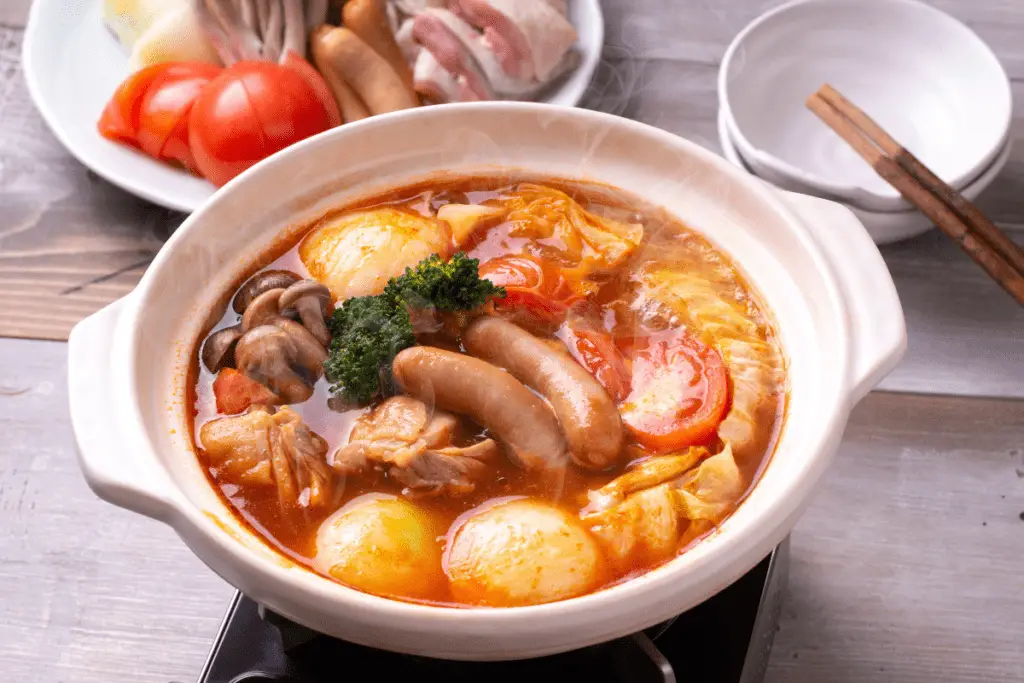
Ganmodoki
A ganmodoki is a Japanese fritter that is made by mashing up soft tofu and mixing it with a variety of vegetables, such as carrots and burdock.
This mixture is then formed into hand sized shapes and is fried. Egg is also sometimes added to the mixture as a binder.
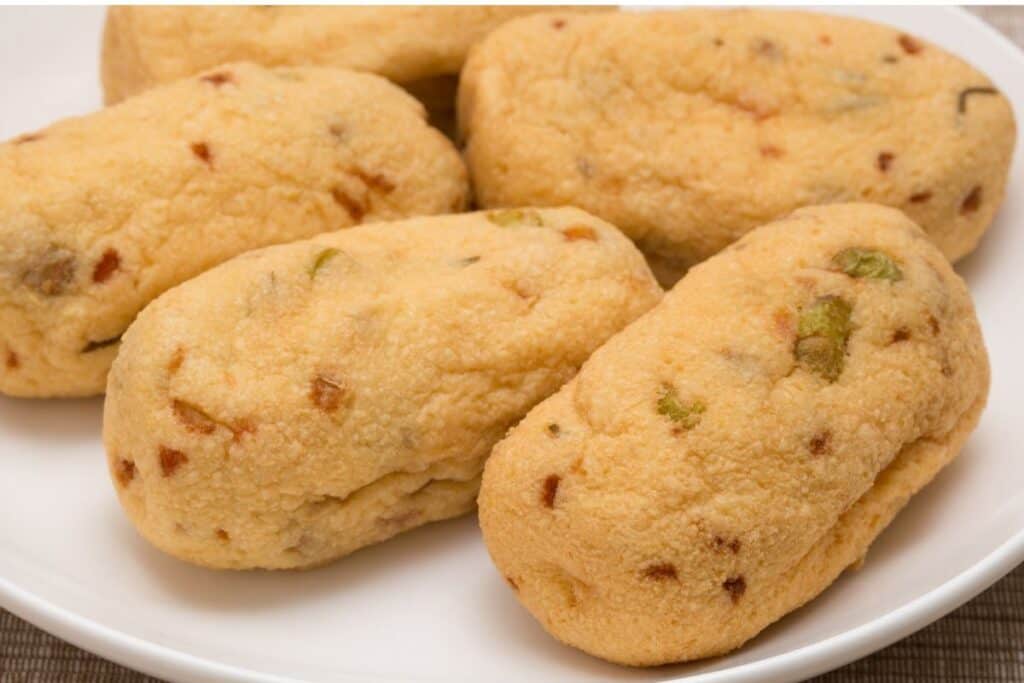
Agesdashi
This dish consists of deep fried tofu that has a light breaded coating on top. This tofu is served hot inside of a hot soy sauce broth. This soup-like dish is usually decorated with green onion or grated daikon radish.
Yudofu
Yudofu is considered a specialty dish in Kyoto that can warm you up on a winter day. Small pieces of tofu are boiled in a broth, then they are taken out and served beside some ponzu or soy sauce.
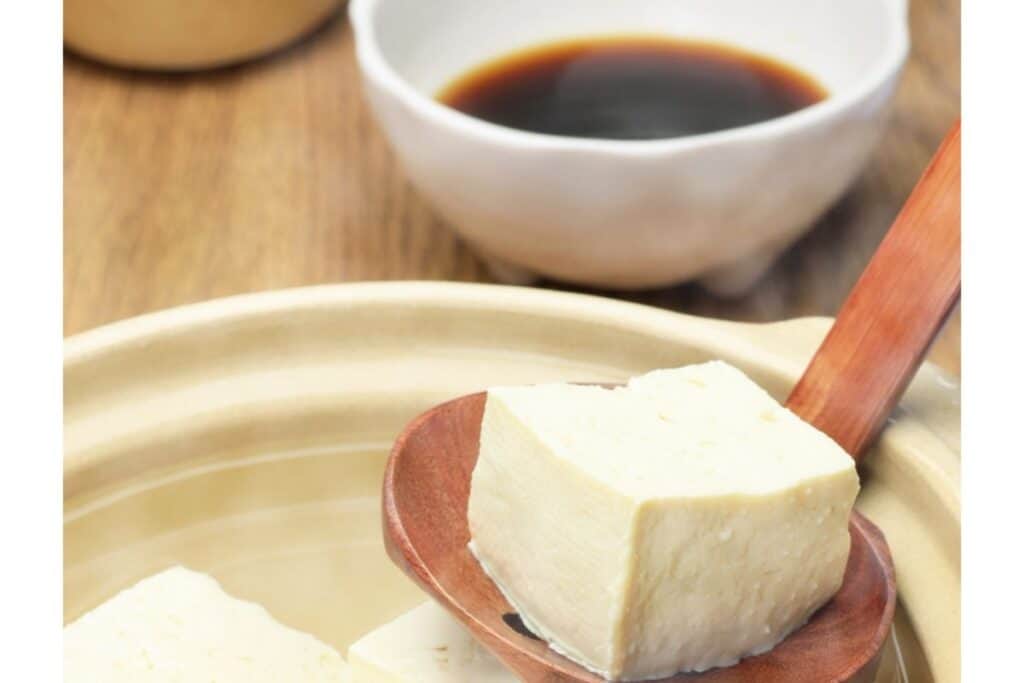
Hiyayakko
Hiyayakko is soft tofu served cold, and is also served with some grated ginger, bonito flakes, and green onion.
Sometimes soy sauce is poured over the tofu to allow the flavor to get absorbed, or sometimes it’ll be served with the dish so you can add as little or as much as you prefer.
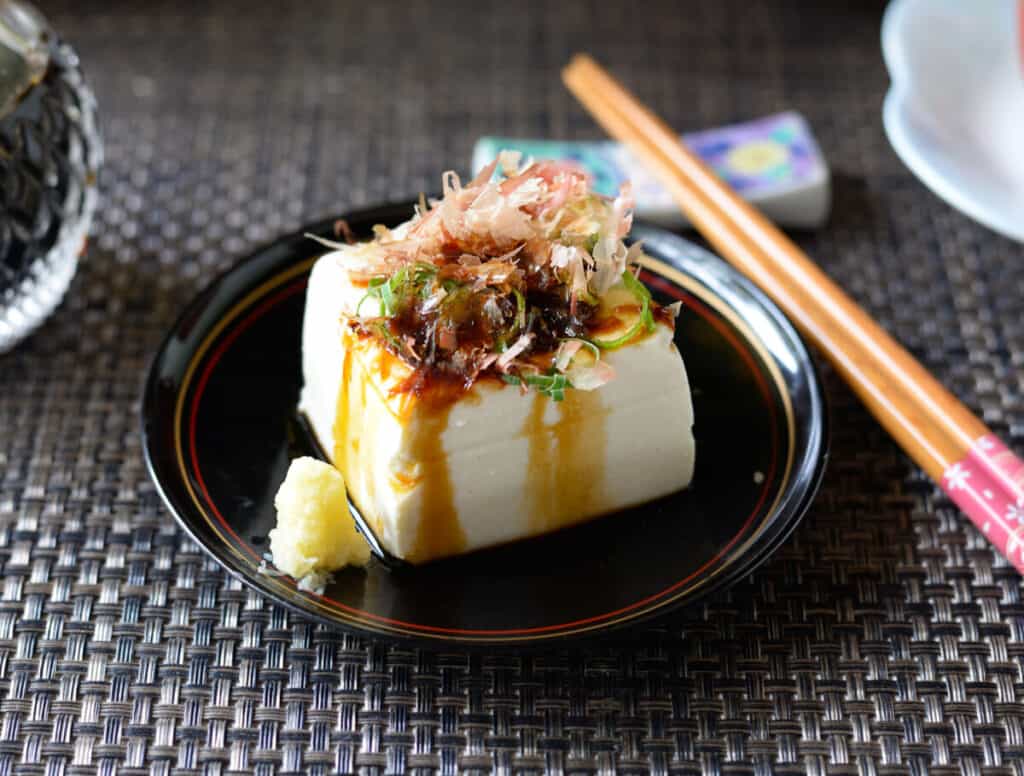
Komodofu
Komodofu is considered a specialty from Gifu Prefecture. It consists of tofu that begins by being wrapped in a komo, which is a wrap that is created with wooden straw.
After the tofu is removed from the komo, there will be some type of design or imprint left on the block.
This tofu block is then cooked in soup broth which gets soaked up in all the nooks and crannies created by the komo wrap, allowing for the broth to get absorbed nicely within the tofu.
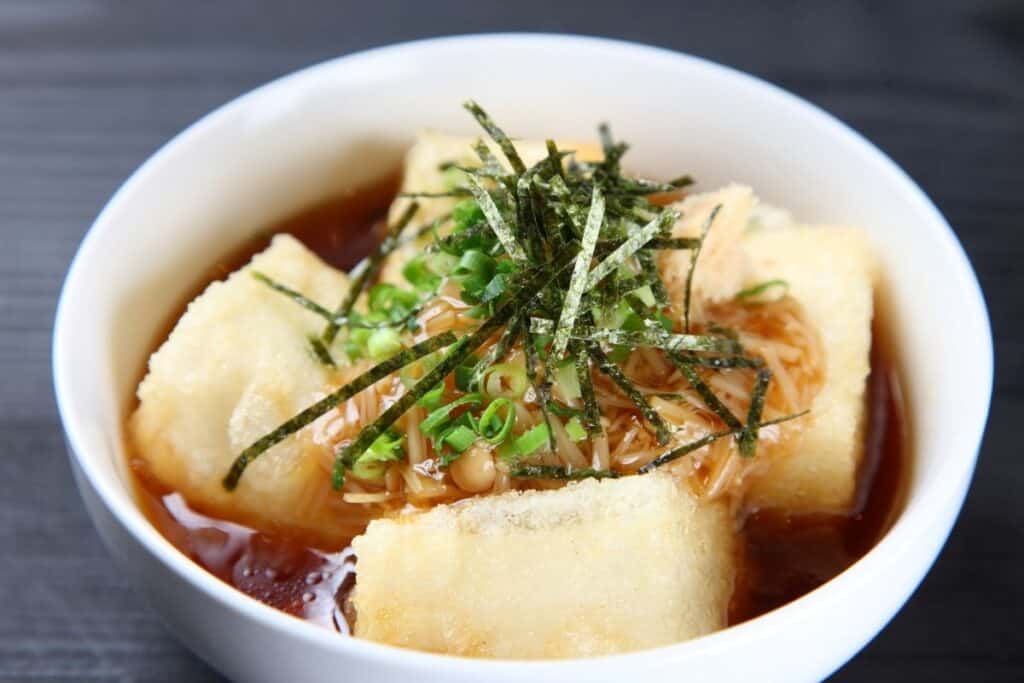
Mabodofu
Mabodofu is an entree consisting of pieces of tofu that are submerged in a spicy sauce.
This dish usually also has fermented black beans in it, as well as pork and red chili. It’s a popular dish in many Japanese and Chinese restaurants, and inspired by a popular Szechuan dish.
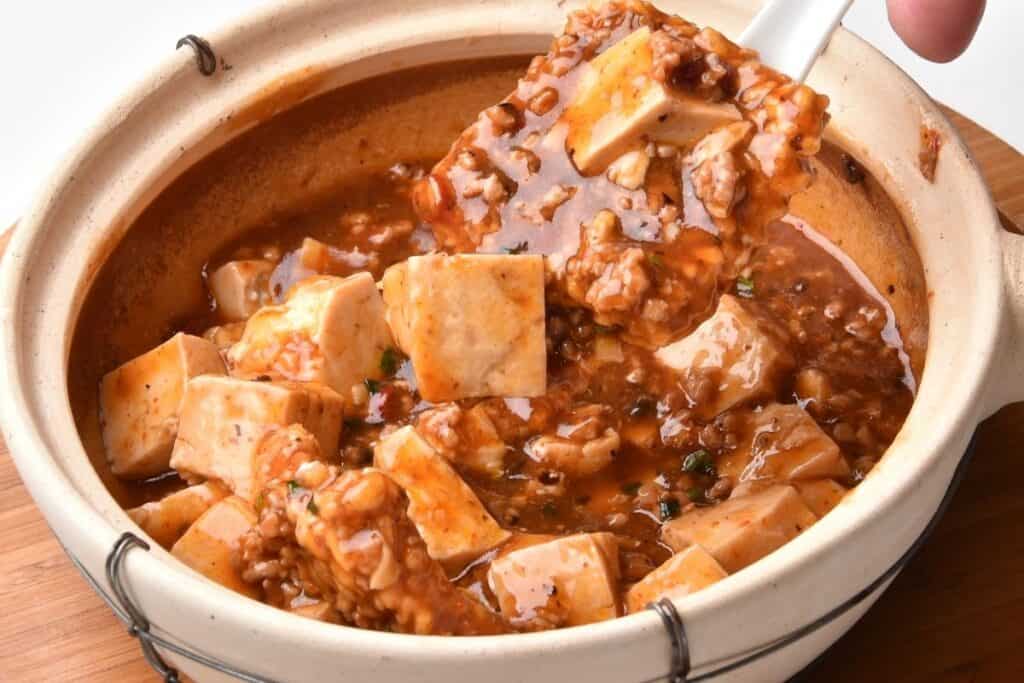
Inarizushi
Inarizushi consists of aburaage tofu that is stuffed with sushi rice and cooked in seasonings.
These can be found in places all over Japan, and are a common snack. These can be purchased anywhere from convenient stores to sushi restaurants.
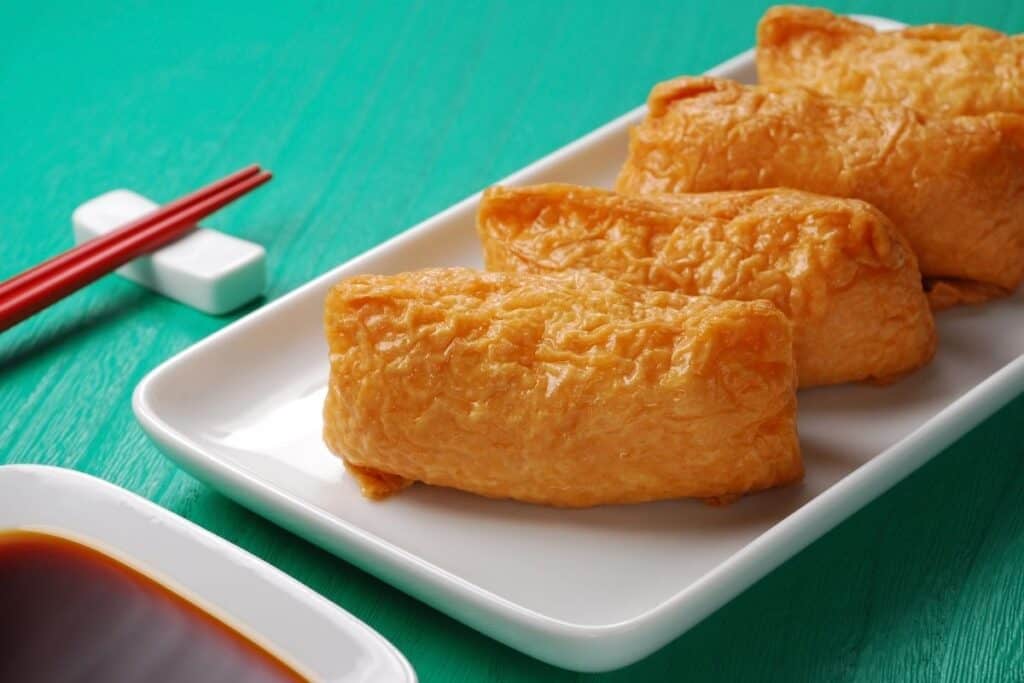
Is Tofu Healthy?
Tofu can be a very healthy addition to any diet, so long as you opt for tofu made with the least amount of processing possible. Eating processed tofu or fried tofu in moderation is fine.
Tofu does not contain a lot of calories and is very dense in nutrients. It is also a very affordable source of protein for those who are looking to reduce their meat intake, or trim some fat off of their grocery budget.
Tofu is also a very hydrating food, considering its very high moisture content. Consumption of soy, which is the bean used to make tofu, has been studied and found to help reduce the development of bad cholesterol and reduce the risk of heart disease.
It is also very easy to handle and cook with. It can be found in almost any grocery store sold in different stages of firmness, and can be eaten raw or cooked alongside numerous dishes from all around the world.










